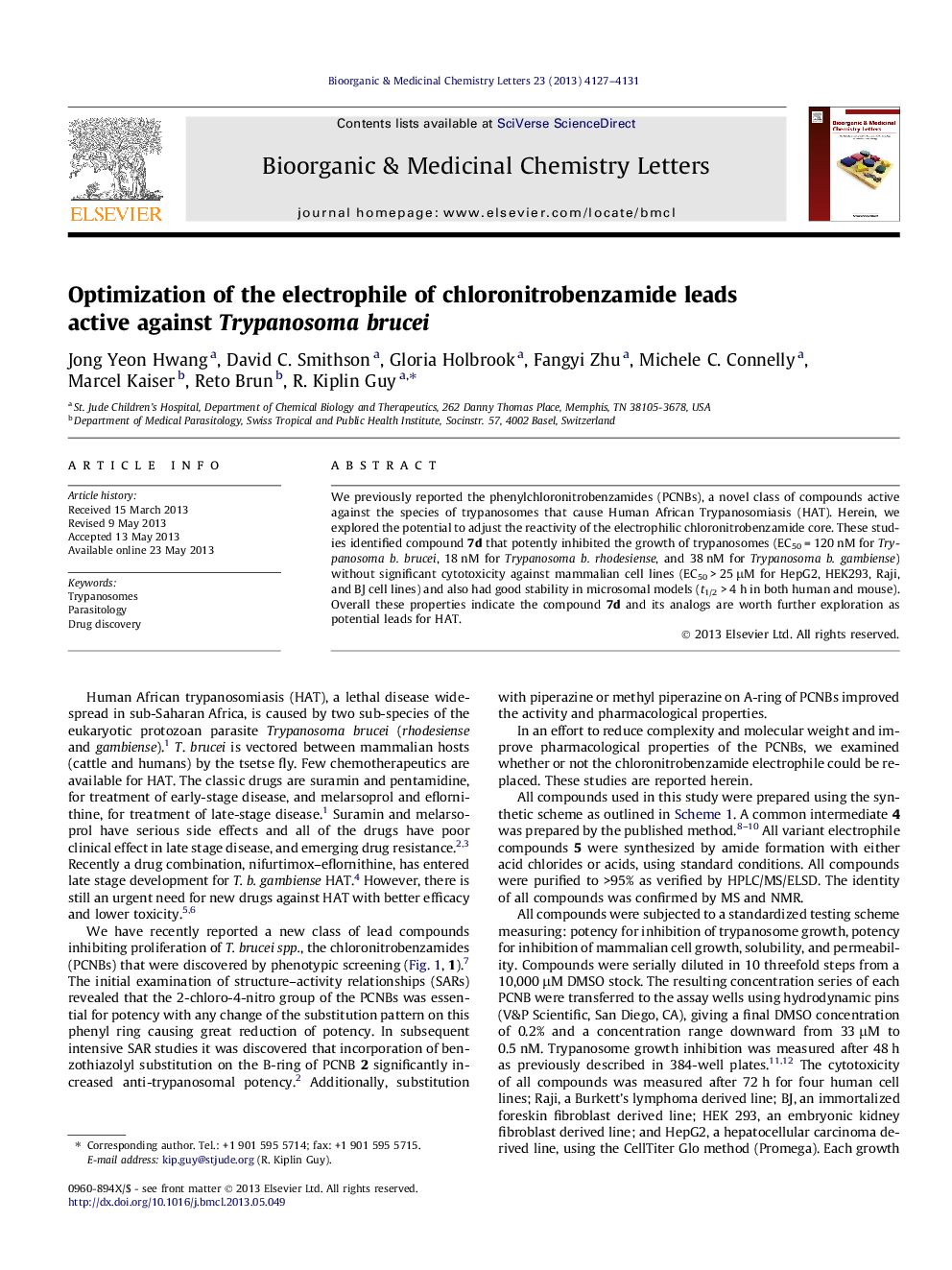| Article ID | Journal | Published Year | Pages | File Type |
|---|---|---|---|---|
| 10591489 | Bioorganic & Medicinal Chemistry Letters | 2013 | 5 Pages |
Abstract
We previously reported the phenylchloronitrobenzamides (PCNBs), a novel class of compounds active against the species of trypanosomes that cause Human African Trypanosomiasis (HAT). Herein, we explored the potential to adjust the reactivity of the electrophilic chloronitrobenzamide core. These studies identified compound 7d that potently inhibited the growth of trypanosomes (EC50 = 120 nM for Trypanosoma b. brucei, 18 nM for Trypanosoma b. rhodesiense, and 38 nM for Trypanosoma b. gambiense) without significant cytotoxicity against mammalian cell lines (EC50 > 25 μM for HepG2, HEK293, Raji, and BJ cell lines) and also had good stability in microsomal models (t1/2 > 4 h in both human and mouse). Overall these properties indicate the compound 7d and its analogs are worth further exploration as potential leads for HAT.
Related Topics
Physical Sciences and Engineering
Chemistry
Organic Chemistry
Authors
Jong Yeon Hwang, David C. Smithson, Gloria Holbrook, Fangyi Zhu, Michele C. Connelly, Marcel Kaiser, Reto Brun, R. Kiplin Guy,
